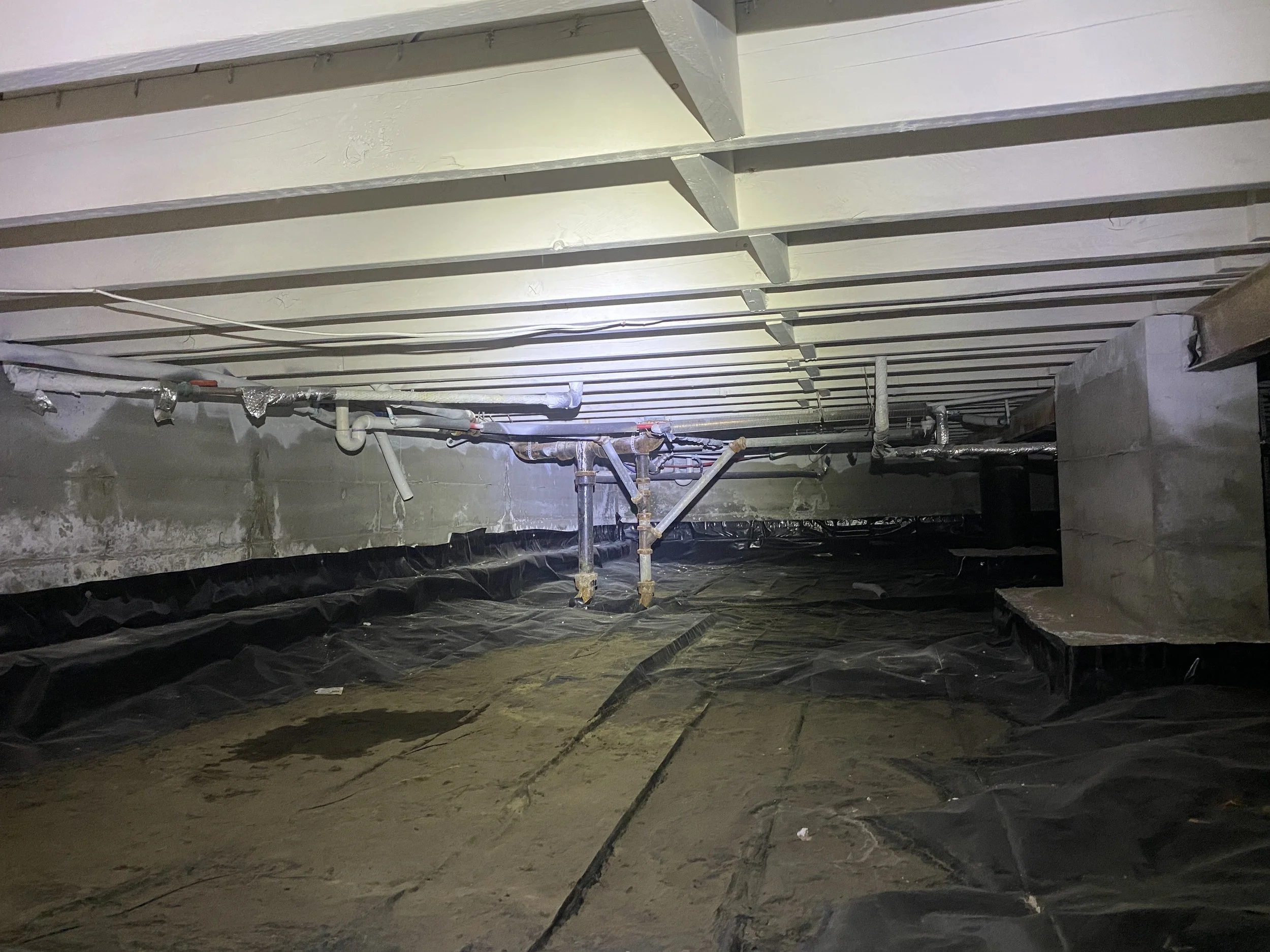Crawl space foundations are a middle ground between full basements and slab-on-grade construction, providing access to utilities while avoiding some of the excavation costs associated with basements. However, in Colorado’s expansive soil conditions, crawl spaces are not without their challenges. In this final installment of our series, we’ll explore crawl space foundations, their common issues, and what homeowners can do to maintain them.
Crawl Space Foundation Construction
Crawl spaces elevate a home off the ground, typically by 18 inches to four feet, creating an accessible area beneath the structure. These foundations usually consist of:
Stem Walls – Poured concrete or CMU (concrete masonry units) walls that support the structure above.
Pier and Beam Systems – Some crawl spaces incorporate piers and beams for additional support, particularly in older homes.
Vented or Encapsulated Designs – Traditional crawl spaces are vented to the outside, while modern encapsulated designs are sealed and conditioned for improved moisture control.
Common Crawl Space Foundation Issues
Crawl spaces are susceptible to many of the same problems as basements, but their exposure to air and ground moisture introduces additional concerns. Here are the most common issues:
1. Moisture and Mold Growth
Expansive soils in Colorado retain moisture, which can create humidity and condensation issues in crawl spaces. This leads to:
Mold and mildew growth
Wood rot affecting floor joists and beams
Musty odors permeating the home
Solution: Proper drainage, vapor barriers, and encapsulation can help control moisture levels.
2. Foundation Movement and Cracking
Because crawl spaces often rest on stem walls, they are subject to soil expansion and contraction. This movement can result in:
Cracks in foundation walls
Uneven floors above the crawl space
Misaligned doors and windows
Solution: Maintaining proper grading and drainage around the home reduces soil movement, and foundation reinforcement may be necessary in severe cases.
3. Pest Infestation
Crawl spaces provide an ideal environment for rodents, termites, and other pests, especially if they are vented and poorly maintained. Signs of infestations include:
Droppings and nesting materials
Chewed insulation or wiring
Hollowed-out wood (a sign of termites which is rare, but possible in Colorado)
Solution: Sealing vents, adding barriers, and maintaining proper moisture levels discourage pests.
4. Poor Insulation and Energy Loss
Traditional vented crawl spaces allow outside air to circulate beneath the home, which can lead to:
Cold floors in winter
Higher heating and cooling costs
Increased risk of frozen pipes
Solution: Encapsulation and insulation of the crawl space can improve energy efficiency.
Preventative Maintenance for Crawl Space Foundations
Homeowners can take several steps to keep their crawl space foundation in good condition:
Ensure Proper Drainage – The ground should slope away from the home, and gutters and downspouts should direct water at least 6 feet away.
Install a Vapor Barrier – A thick plastic liner on the crawl space floor helps control moisture.
Consider Encapsulation – Sealing and conditioning the crawl space prevents many common moisture-related problems.
Monitor for Pests – Regular inspections and proactive pest control measures can prevent infestations.
Check for Structural Issues – Keep an eye on foundation walls, support beams, and floor joists for signs of movement or damage.
When to Call a Professional
Crawl space issues can often be managed with regular maintenance, but some signs warrant professional evaluation:
Large cracks in foundation walls
Severe sagging or bouncing floors
Persistent moisture or standing water
Extensive mold growth
Signs of pest infestation beyond minor activity
If these issues arise, consulting a structural engineer, foundation and/or crawlspace encapsulation specialist is the best course of action.
Final Thoughts
Crawl space foundations, while common, require proactive maintenance to prevent moisture intrusion, structural movement, and energy loss. Understanding how expansive soils interact with crawl space foundations can help homeowners protect their investment and ensure a stable, comfortable living environment.
That concludes our three-part series onFoundations and Expansive Soils in Colorado! If you have any questions or need a home inspection, don’t hesitate to reach out.
If you are in need of a professional opinion regarding a concrete slab or foundation, check out our Preferred Trade Partners & Professionals List.

